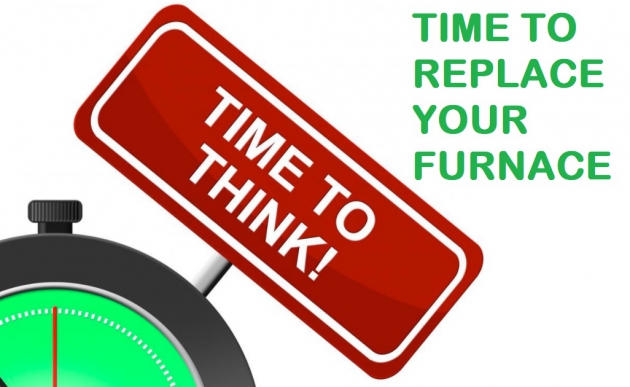Anyone with a furnace will already know that it sometimes makes a little noise during normal operations. So, unless your furnace is making some sort of horrendous noise that you’ve never heard before, this isn’t a good indicator that something is wrong. There are several different parameters that you can observe that will give you valuable clues about the health of your furnace. Let’s take a closer look at these indicators in more detail so that you can make a more informed choice about a furnace replacement for your home.
The Thermostat
The thermostat acts as the brain for your entire HVAC system, so it makes good sense to start here. Many of the furnace problems that people believe that they have can be traced instead to a faulty thermostat. Dust and debris can get inside the unit, and a good cleaning may be all that it needs to get up and running again. But, the sensor may be damaged, or there could be another issue that requires a professional repair or a replacement. Another thing to look out for is temperature fluctuations between different rooms in your home. This can be caused by an uneven distribution of heat, and you may have a number of gaps in your ductwork system. If you set the thermostat under normal conditions and the system cannot hold a consistent temperature, it’s likely that your thermostat is faulty, and this will affect the performance of your furnace.
The Pilot Light
The pilot light is a small gas burner that is continuously lit to provide an ignition for gas when heating or hot water is required. If the pilot light is healthy, it should be burning with a blue color, and if the light is a yellow color, this is a problem. The yellow color indicates that an incomplete ignition process is taking place, and your pilot light may be emitting carbon monoxide. This needs to be fixed quickly, carbon monoxide is extremely dangerous, and it can result in serious illness and fatalities. Every home should have a carbon monoxide detector installed around 10 feet away from the furnace to detect leaks. This alarm is usually battery powered, and the batteries should be checked every month to make sure they are working correctly. If you have carbon monoxide problems, get everyone out of the house and call a local HVAC professional for expert help.
Energy Bill Fluctuations
Some people may notice that their energy bills are inconsistent, and they may even fluctuate a great deal. This is not the seasonal difference that you would expect as the weather changes. This is a good indicator that the thermostat is not communicating effectively with the furnace, and the problem could lie with one or both of the systems. If your furnace will not turn on or if it will not stay on, then your furnace is probably due for a replacement.
The Furnace Age
The average useful lifespan of a furnace is 15-18 years, and it’s likely to be at the upper end on that range with regular annual maintenance. So, if your furnace is 15 years old or even older, then it’s probably reaching the end of its lifespan. The furnace may still be working, but it will be less efficient than when it was younger. Knowing the age of your furnace is very useful when you need to make hard decisions. As an example: if your furnace is starting to fail and you’re facing a large repair bill, it’s often a better idea to invest in a new furnace instead. Choosing to replace a furnace is often a judgment call, your HVAC specialist can offer advice, and you make the final decision. It is worth noting that struggling on with an aging furnace may result in poor performance and gradually declining energy efficiency. A new modern furnace will save money in energy savings that can help to recoup the costs in next to no time.
Moisture Issues
If you notice a buildup of moisture or water on the surface of your furnace or pooling around the base, this is a problem. The likely cause is a leak in the condensate drain line or somewhere in the humidifier. Both of these issues will affect the furnace and prevent it from working well, and they need to be fixed. Clearing a clogged condensate drain line isn’t too difficult, but if you’re not confident, contact your local HVAC specialist for expert help.
Bad Smells
Sometimes you can tell that something is wrong because a bad smell seems to permeate your entire home. The air is still distributed via the ductwork network, so the smells can be anywhere, but they may originate at the furnace. The first type of odor is a burning smell that is a strong indicator that there is some sort of electrical problem. This could be a burnt out component, or if the furnace hasn’t been used in a while, it could be dirt or dust deposits heating up and burning on the surface of the furnace.
Another type of odor is a “rotten egg” or sulfurous smell, which is a very bad sign. The manufacturers of gas add this odor to the gas because, in its natural state, it’s odorless. The sulfur smell acts as a warning that there is a gas leak somewhere, and you need to get your family out of the home. Open any windows or doors on the way out if it’s safe to do so and contact the gas company once you and your family are clear.
Always Choose a Professional Furnace Replacement
If you’ve experienced one or more of these furnace issues, it’s time to install a new furnace. Always choose a local certified HVAC specialist for this work, your furnace is a significant investment, and it needs to be professionally installed. A poor installation by an amateur could place your health at risk and damage your home.

